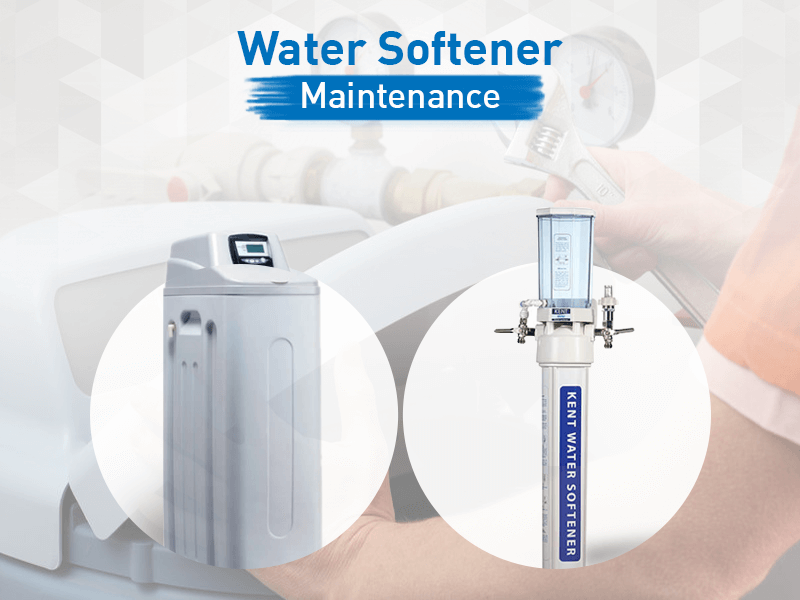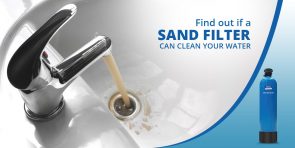Brilliant Water Softener Maintenance Tips you Need to Follow
Hard water, though not very harmful to your health, can damage your hair, skin, clothes as well as utensils. The build-up scales on the utensils, water heaters, showerheads, and faucets cause a lot of problems for homeowners as they need to replace these items on a regular basis. As a result, people who live in areas that receive hard water prefer installing a water softener. Renowned brands such as KENT provide water softeners that are compact and come with best-in-class softening technology. However, owning a water softener is not enough; you also need to maintain the water softener regularly for optimal performance. In this blog, we discuss some effective water softener maintenance tips that you can follow at home. Read on.
Why do you Need a Water Softener?
Hard water leads to a number of hair and skin problems. The traditional methods of softening water don’t work and are time taking at the same time. The only way to deal with hard water is to install a water softener. Depending on your need, you can install a point-of-use or whole-house water softener. The appliance exchanges ions of sodium with calcium and magnesium to make water soft. The soft water can be ideally used for different household purposes, thereby keeping your hair and skin safe.
Water Softener Maintenance Checklist
Follow the below-mentioned checklist and tips to maintain your water softener:
1. Check the Salt Level
One of the important water softener maintenance tips is to check the salt levels. The reason is when the salt level decreases, you start getting hard water. When you check the salt level occasionally, you can avoid the common hard water issues. The thumb rule is to check the salt level every 4-6 weeks, however, the frequency may vary depending on the equipment, level of hardness, and many other factors.
2. Check out the Salt Bridges
As you start using the water softener regularly, you may notice a layer of a hardened salt bridge in the brine tank. Using poor quality salt, high temperature or humidity are some of the main causes that create salt bridges. The presence of salt bridges prevents the resin beads of the water softener from regeneration. Check and clean the brine tank regularly to prevent salt bridges in the water softener. However, ensure that clean the salt bridges carefully as improper cleaning can damage the walls of the softener.
3. Break up salt bridges
When salt accumulates in the brine tank, it may create a solid layer or “bridge” that obstructs the mixing of loose salt with water, hindering the water softener’s performance. To resolve this issue, you can use a long broom handle to break up any solid layers that have formed in the centre of the tank. By inserting the broom handle all the way to the bottom and repeating the process several times, you can effectively break up any salt bridges and enable proper mixing of salt and water.
4. Dissolve a salt buildup in the brine tank
When using salt in a tank, sometimes it can accumulate and form a mushy pile at the bottom. This can prevent the salt from properly mixing with the water. To remedy this, you can use a broom handle to break up any large mounds that form. Additionally, scooping up the mush and dissolving it in a bucket of hot water can also help. Once dissolved, pour the mixture back into the tank to ensure the salt is properly dispersed throughout the water.
Cleaning the Tank
1. Water Softener Maintenance Schedule
Checking the salt level is not enough. You also need to check the condition of the softener closely every three to four months. There are chances that the brine tank of the water softener may have excessive salt buildup. Known as bridging, it prevents salt from getting in contact with water. This interferes with the cleaning of the resin bed, thereby hampering the water softening process.
2. Clean the Brine Tank
The brine tank present in the modern water softners rarely need cleaning. however, to avoid any problems, ensure that you clean the bring tank once in a while. Before you proceed with cleaning the brine tank, don’t forget to read the user manual to know the best way of cleaning the tank, for the proper functioning of the appiliance clean the brine tank every six to 12 months.
3. Use the Right Salt
Many people use any old salts available at home for the water softener. To get the best results, it is necessary to use the right kind of salt and avoid using any old salt that you have at home. Cubes and Crystal are the two kinds of salts that you can use for the water softener. Though most of the softeners use cube salts, don’t; forget to check the manual to know which kind of salt will go with the machine.
Also Read: How to solve hard water problems at home
4. Flush the Resin Bed
The resin beds are regularly recharged with salt. However, you can also flush the resin bed once in a while using the water softener cleaner. The water softener loses its efficiency as a result of the presence of iron, heavy metals, and other organic compounds. To maintain the efficiency of the softener, clean the resin bed once in a while.
Conclusion
Periodically checking and cleaning the water softener ensures that the appliance runs smoothly without any issues. In addition to opting for the best water softener available for domestic purpose, you also need to opt for regular water softener maintenance for the best results. However, make sure that you take the help of a professional occasionally to clean the water softener for best results.





